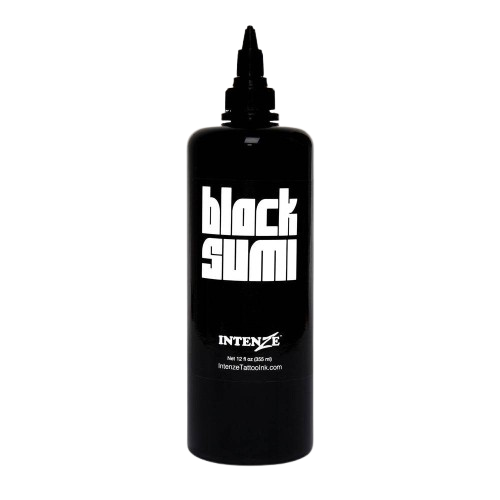INTENZE
Black Sumi - Intenze Japanese Tattoo Ink
In stock, ready to ship
Size: 12 Oz
Japanese Tattoo Ink: A Brief History
Japanese tattoo ink has its roots in Chinese wash painting, which developed during the Tang Dynasty (618-907). Wang Wei, a famous painter of the period, is credited with adding color to ink and wash art. This style evolved further during the Song Dynasty (960-1279) and was introduced to Japan in the 14th century by Korean missionaries.
In traditional wash painting and calligraphy, artists grind ink sticks (sumi) on an ink stone to create ink. This ink, made from soot and animal glue (nikawa), is preferred for its rich quality. Some ink sticks are even decorated with intricate designs and gold accents.
Brushes and Tattoo Art
Wash painting brushes, made from bamboo and animal hairs such as wolf, goat, or horse, are essential for the fine details of the art. Smaller brushes, like those made with wolf hair, create thin, precise lines, while larger brushes, such as the "big cloud," hold more ink for broader, shaded strokes.
From Art to Skin
Inspired by these traditional techniques, we've developed tattoo pigments that recreate the subtle gradients and fine lines of wash painting. Our inks are designed to help artists achieve smooth transitions and rich contrasts, bringing this ancient art form to life on skin.


